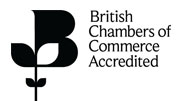How to promote environmental sustainability at work
24th August 2021

Promoting environmental sustainability at work is more important today than ever before. We often hear about changing weather conditions and its impact with the recent floods and heat waves across the globe. As sea levels continue to rise and global warming kills off wildlife across the world, this is no longer a problem for tomorrow.
In 2019, businesses contributed to 17% of greenhouse emissions in the UK. Statistics like this highlight how businesses both big and small have a duty to protect and promote environmental sustainability at work.
Many business owners attempt to achieve a status as net zero businesses. However, in order to do so, they must:
- Reduce their impacts by measuring damage and setting targets.
- They must deliver on these targets.
- Compensate residual emissions.
Put simply, net zero refers to the balance between the amount of greenhouse gas produced and the amount removed from the atmosphere. We reach net zero when the amount we add is no more than the amount taken away.
The Pros and Cons for Businesses
The negatives that come about with a lack of sustainability at work include:
- Businesses can become liable for emitting greenhouse gasses.
- Businesses may contribute to many risks for the planet such as extreme weather conditions, water scarcity and increased inequality.
The positives for businesses promoting sustainability at work include:
- Efficient energy usage which can in turn lead to reduced costs.
- Innovation that can inspire new products and services that are less carbon-intensive.
How to evaluate sustainability at work
The first step is to consider resources. One might consider the use of travel required for business purposes. For example, companies that use transport such as company cars may want to consider whether their vehicles produce high levels of harmful emissions. In addition, smaller companies may help by keeping a close eye on materials used in office spaces. For example, plastics which can damage the environment.
Businesses may also consider how their investments impact the planet. This is not just important for large companies. Many smaller businesses may partner with larger companies that cause damage. An example of this might include small catering companies gaining supplies from large supermarkets. For catering companies, it might be better to buy locally grown food at a market in order to reduce transport usage.
Spot Visible and Invisible Causes
To help the environment at work, employers should keep an eye on both visible and unseen factors. There are a range of visible factors in office spaces that can have negative impacts on the planet. In addition to plastics, employers might also consider taps used in the company. Installing push taps is great as they turn off automatically. This helps reduce the risk of them being left running which can waste a lot of water.
Another advantage of managing these visible factors is that it raises awareness. For example, where employees see these changes, it encourages them to think about what they can do to help. It may also encourage them to suggest other measures.
One example of a less visible factor that can affect the environment is the use of IT centres. This is because Data and IT centres require a lot of energy and carbon emissions. It is important for businesses to take action on these less visible factors as they often go unnoticed and cause long term damage.
Actions in the Workplace
In addition to what we have covered above, here are a range of actions to take for a more environmentally friendly workplace:
- Training and development – Business owners should consider how sustainable action is taught with the use of training. However, in doing so one should make sure that it is treated as essentially as any other training. Training such as this should provide insight to staff to the importance of being sustainable and introduce their individual and group responsibilities to the cause.
- Appoint champions – Another great way of increasing environmental awareness is to nominate champions. As champions, workers can introduce initiatives and provide feedback on where improvements can be made. This is a great way to provide extra responsibility for workers that wish to contribute more to the company.
- Introduce initiatives – Initiatives are a great way to spread awareness and reward those for their contributions. An example of this might include a cycle to work initiative in which employers encourage workers to cycle to work rather than drive. Those who manage to do so for a set period of time can receive small gifts such as a box of chocolates and recognition in front of the workforce.
Recruitment and Selection
One way of obtaining sustainability at work is to incorporate it into recruitment and selection processes. Firstly businesses might consider updating job descriptions to include tasks and responsibilities relating to sustainability. For example, you might ask managers to report on resource use in their areas and come up with ideas to reduce waste.
In addition, providing flexible working opportunities for employees can have great benefits for the environment in addition to providing employees more freedom. It can help the environment by:
- Reducing the amount of employees commuting which reduces emissions.
- Less resources needed such as paper and food.
- Less energy required in office buildings as less computers are used etc.
An additional benefit of promoting sustainability at work is that it makes the job more attractive for job seekers. There have been a number of studies that suggest that job seekers are more attracted to jobs with sustainable practices. This is because working for a sustainable company is a source of pride for employees and shows that the company is ethical and cares about society and global causes. Additionally, by including sustainability as part of recruitment and selection, job candidates can connect organisational values to their own values. This is important as it can help employees feel like they are a good match for the company.
Another way to include sustainability into recruitment is by ensuring recruitment and selection processes are environmentally friendly. One way to do this is with the use of IT which can help reduce travel and paperwork. Many companies already conduct much of the recruitment process electronically with job advertisements, obtaining CV’s as well as reference checks. (asking for an e signiture – docusign)
Performance Management
Performance management is the process of ensuring that a set of activities and outputs meets an organization’s goals in an effective and efficient manner.
A good way of achieving sustainability at work, is to include the environment as part of a competency framework. This can be done by setting out knowledge requirements relating to sustainability. For example one might include:
- How changing climates is likely to affect the planet.
- How work activities influence the environment with energy use and greenhouse gasses.
- What employees can do to help.
Furthermore, another way to include sustainability as part of performance management processes is to introduce rewards and benefits. We’ve previously touched upon the idea of rewarding employees for their contributions to the environment. This is a great way to retain and ensure employees are recognised. However, when providing rewards for environmental action, employers should be careful to pick gifts appropriately. Gifts should be in line with the values of the company. That being said, gifts such as company cars or free travel to places may not be appropriate when considering the environment at work.
In addition, it is important to reflect on environmental stability objectives as part of performance development processes. Furthermore, goals should be set up on an individual level as well as for the company and it’s individual departments. An example of a company goal might include reducing energy levels by 50% from the previous year. An individual goal might include recording energy usage monthly then reporting results to management. Another example of individual goals might include installing LED lights and monitoring the change in energy use.
To find out more about the process of talent management, read this article on the talent management cycle.
Learning, Development and Training
Learning and development is a vital part of a company’s talent management process. One way to implement training to include environmental stability is to include it as part of the induction process. The onboarding process as a whole is essential as it helps ensure employees understand the values of the company and for making a positive and welcoming experience for new employees. Inductions should make sure to reference sustainability by introducing company values, culture and ambitions.
Basic training on sustainability at this stage might include information on:
- Carbon footprinting.
- Reducing resources, travel and water.
- Relevant policies, e.g expenses.
Leadership
Strong leadership is a must when promoting sustainability at work. Business owners and managers should lead by example and make effective communication of how to implement sustainable practices. Thus leaders should take accountability for a company’s environmental performance. Furthermore, it should be clear who is responsible for making decisions for environmental sustainability in order to understand how to make changes. This is also important as it will help build trust from employees as they can prove they are able to deliver on commitments.
Leaders may use environmental sustainability as a method for workforce engagement. This is because it can help motivate employees together towards goals relating to the environment. Furthermore, an employee’s identity within an organisation can be reinforced as environmental considerations can help how employees view the company as well as how they view their position as part of the company. Sustainability can also help employee commitment as success from different objectives relating to the environment can raise motivation.
For more information and HR support, contact us.








































